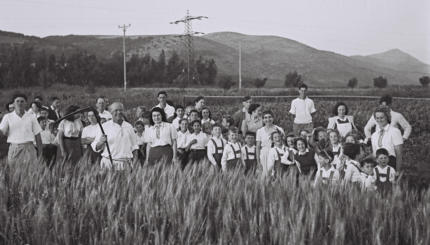With the
High Holidays
right around the corner, now is a great time to be thinking about the message your synagogue sends to new and potential members about LGBT inclusion.
Here are several suggestions for how to make your synagogue a more inclusive, welcoming, and safe environment for lesbian, gay, bisexual, transgender, queer, and questioning individuals and families. This guide is neither exhaustive, nor does it apply to every synagogue community. A special thanks to Keshet educator Suzie Schwartz Jacobson for helping to compile the original, more detailed version of this guide—which will be published on the
Keshet
website soon.
Values and Policies:
Here a few suggestions to help you express your values clearly through your synagogue administration:
- Make inclusion of LGBT members a core value of your synagogue: Before you can examine how your synagogue could become more inclusive of LGBT individuals and families, there must be a commitment and buy in on the part of all staff, lay leaders, and members for this to be a core value of your community. It is essential that this value be explicitly expressed and discussed openly. One way to do this is to open up public and communal discussions about LGBT inclusion at the beginning of the year, or when discussing the vision and values of your synagogue. LGBT inclusion must be discussed by your board, professional staff, clergy, committees and lay leadership, general membership and in your religious school and teen programming
- Make sure your registration forms are inclusive of LGBT families and individuals: When crafting registration forms and other documentation, be sure that they are welcoming to a spouse or partner of any gender. Rather than marking only “mother” and “father,” or “husband” and “wife,” write “parent 1” and “parent 2,” or “partner 1” and “partner 2,” etc. If you need to ask for the gender of an individual, allow room for a write in category if the member identifies outside of the two binary genders (male and female), or avoid asking for gender if the information is not necessary.
Language and Communication:
As a synagogue professional or lay leader you are an important role model in the lives of the individuals in your community.
- Do not assume the sexuality or gender of your members: When leaders make incorrect assumptions about the sexuality or gender of community members we risk rendering gay, lesbian, bisexual, transgender and questioning individuals invisible. For example, when talking to members of all ages about dating, don’t assume that they are interested in the “opposite sex”, and rather than referring to members as “ladies,” “girls,” or “boys,” ask them how they identify, and what words they use to describe themselves.
Synagogue Culture:
In order to achieve your goals, your values of equality and inclusivity must be embedded in the everyday culture and activity of your synagogue.
- Talk together about how to make your synagogue more supportive of LGBT members…often: The only true way to create a fully open and supportive community is to be committed to values of equality and respect all the time, every day. Have your rabbi, professionals, lay leaders and members check in regularly and discuss how your synagogue is meeting its goals and achieving its values.
Torah and Ritual Moments:
Our commitment to the inclusion of LGBT Jews is not just a secular value, but a Jewish value.
- LGBT issues on the bimah: Invite clergy or others speak from the bimah about Jewish values of equality, inclusivity, and safety for all LGBT individuals. This is an important way to teach about LGBT issues, encourage sensitivity regarding sexuality and gender expression and also publicly discuss your synagogue’s commitment to its LGBT members. Click here and enter the keyword “sermon” to see examples of sermons on LGBT themes.
- Provide adult learning on LGBT topics: When appropriate, integrate LGBT issues and topics into lectures and learning series in order to see how inclusivity is essential to our Judaism. When discussing Jewish ethics around love and sex, do not just refer to heterosexual dating and marriage, but include a full spectrum of relationships and ways to experience human love. When studying Torah, understand the text using a LGBT lens. One way to do this is to use the book Torah Queeries, or Keshet’s Torah Queeries online database, which provides a LGBT reading of each parasha (torah portion). You can also introduce or bring in LGBT scholars who interpret Torah from a LGBT perspective (Here is an example from Dr. Joy Ladin, and one from Rabbi Steven Greenberg. When studying Jewish history, include the history of LGBT Jews (for example: http://lgbtjewishheroes.org/). And start a conversation about Keshet’s Seven Jewish Values for Inclusive Community with your community. These are just a few examples of the many possible ways to teach about LGBT and Jewish topics.
Like this post?
- Join the conversation through MyJewishLearning’s weekly blogs newsletter.
- Get breaking LGBTQ Jewish news, resources and inspiration from Keshet in your inbox!
Torah
Pronunced: TORE-uh, Origin: Hebrew, the Five Books of Moses.


